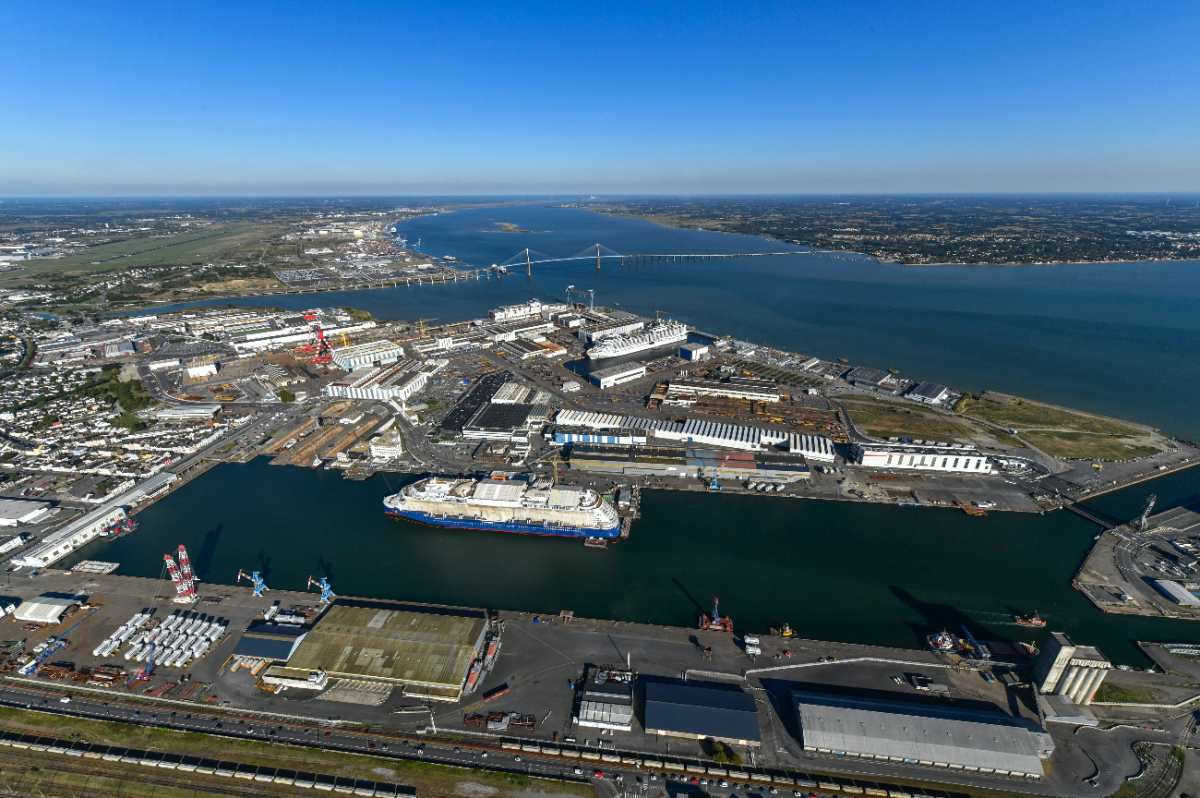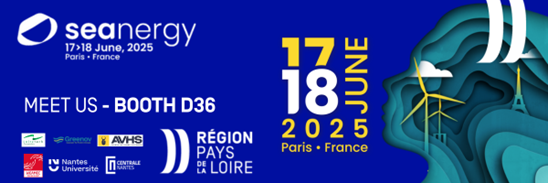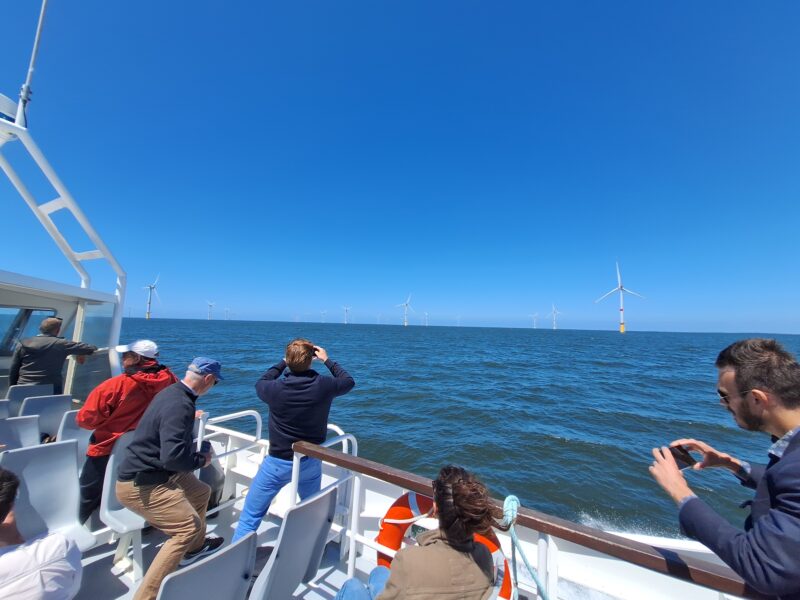
French State provides over €2.5m in total, with Brittany and Pays de la Loire prime beneficiaries
The winners of the call for expressions of interest to support ports in building floating wind farms have been announced by the French State. More than €2.5m of funding has been earmarked for the “Nord Atlantique Manche Ouest*” area for Brittany and Pays de la Loire, with €1.2m going to the Eole project at Nantes-Saint-Nazaire and €1.2m going to the INFLOW project at the ports of Brest and Lorient. Both regions are at the forefront of France’s marine renewable sector and they are keen to cooperate on growing it further, drawing on the complementarity of the ports of Nantes-Saint-Nazaire, Brest, Lorient and La Turballe. However, these regions are calling on the state to support them in the port development and planning which is necessary if they are to help France reach its ambitious green energy targets.
As the marine renewables sector is going from strength to strength, the call for expressions of interest “Ports and industry 2030” was issued for the upgrading of port infrastructure to cater for the growth of the floating wind. The French President has announced the goal of achieving 40 GW by 2050. The Nord Atlantique Manche Ouest (NAMO) area will be a major area for the developing of this type of marine renewable and a public consultation has been planned for October.
Brittany and Pays de la Loire have always taken a joint approach to marine renewables, combining the strengths and specifies of their ports Nantes-Saint-Nazaire, Brest, Lorient and La Turballe. This necessary cooperation was highlighted in the call for expressions of interest and it should put both regions at the forefront of wind power in France and Europe. Together, the ports can cover the whole floating wind value chain: floater fabrication and assembly, wind turbine integration, preparation of moorings and cables, and wind farm maintenance. Each port specialises in a particular field (see overleaf).
However, “If such large-scale wind developments are to successfully take place and be accepted, then port and infrastructure planning will need to be organised by the French State and in agreement with the regions,” states Claire Hugues, in charge of maritime affairs and Vice-President of the Pays de la Loire Regional Council, and Daniel Cueff, in charge of maritime affairs and Vice-President of Brittany Regional Council. For these regional authorities, “Planning should take place at scale, across the whole Nord Atlantique Manche Ouest area and it should be feature in floating wind strategic roadmap.” This roadmap is set to be enacted by the French State in the near future.
In Brittany and Pays de la Loire, stakeholders are involved in helping local economies benefit and in ensuring maritime communities, such as fishing, can co-exist harmoniously, which is a requisite for offshore wind farm developments. All our ports have strengths to offer. Together, we can deliver the energy transition for our future and that of our children.
Ports in Brittany and Pays de la Loire: strengthened synergy for offshore wind
Brest and Lorient: The French State earmarks €925,000 and €450,000 as part of call for expressions of interest
The call for expressions of interest confirms Brittany’s pioneering position in this market. The Region has invested heavily in the expansion of the Port of Brest to cater for marine energy activities. The polder, a 50-hectare industrial terminal with 380m of quay dedicated to offshore wind power, is home to Haizea, for example, which manufactures part of the foundations for the 62 wind turbines of the Ailes Marines offshore wind farm in the Bay of St-Brieuc. The port of Brest is in fact better suited to the specific requirements of a floater construction and production site.
As for Lorient, it is the closest port base to the future Bretagne-sud wind farm. Its deep-water access, port infrastructure and 3.5-hectare land reserves also enable it to help deploy cables and anchors, to maintain future offshore wind farms and to offer services for specialized vessels (ship chandling, bunkering, holding areas, etc.).
Port of Nantes-Saint-Nazaire: As a figurehead for marine renewables, the Port of Nantes Saint-Nazaire has played an active role in the successful installation of France’s first wind farm at Saint-Nazaire. The marine renewables industry is also deeply rooted locally: Chantiers de l’Atlantique, which has successfully diversified by producing electrical substations that are securing numerous contracts in Europe, and GE Renewable Energy, which has been operating alongside the quayside in Montoire since 2014. It is now one of Europe’s leading players in the assembly of offshore wind turbines.
Building on its experience in the construction of France’s first offshore wind farm, and its close ties with industry players, Nantes Saint-Nazaire Port is committed to the development of large-scale, high-capacity floating wind turbines. As part of the EOLE project, Nantes Saint-Nazaire Port plans to upgrade and expand its existing infrastructure as a base for the integration of floating wind turbines, in order to meet the requirements of the industry (more than 750m of quay reinforced to more than 30 tonnes per m2). Production rate, distance from future wind farm sites, quay load-bearing capacity and versatility of use are the key performance criteria for this activity.
The port of La Turballe has been redeveloped as a base for offshore wind farm maintenance. Today, it is home to the maintenance base for the Banc de Guérande wind farm. Its technical features and location make it an ideal reference port for future maintenance bases.
*Nord Atlantique Manche Ouest or “NAMO” is a maritime area along France’s north west seabord, with the Channel to the north and the Atlantic to the west.

